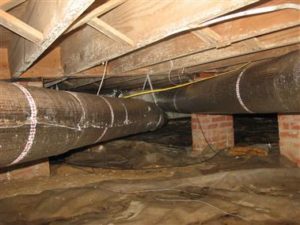Archives: April 4, 2017
The Dangers of Ductwork Condensation to Your Home
 Real estate developers do all they can to construct homes which are designed to keep moisture out. However, the problem comes when the source of the moisture is from within your home. This is why there is need for attention and detail in home construction and maintenance. This will go a long way in making a big difference when it comes to prevention of condensation on vents and ducts.
Real estate developers do all they can to construct homes which are designed to keep moisture out. However, the problem comes when the source of the moisture is from within your home. This is why there is need for attention and detail in home construction and maintenance. This will go a long way in making a big difference when it comes to prevention of condensation on vents and ducts.
As a matter of fact, condensation can do as much damage as a leaky roof. There are many reasons why condensation occurs and what it is that you can do about it.
Hot and Humid Environment
When humid air comes into contact with a colder surface, condensation forms. This can be seen when you fill a glass with ice water. HVAC ductwork operates in a similar manner and when the ducts fill up with cold air inside, humid air hangs outside and droplets form.
The droplets can promote the growth of mildew within your drywall and insulation. This can cause stains to bleed through your ceilings and walls and over time structural damage can occur. It is therefore important that you do all you can to prevent unwanted condensation.
Using special ductwork insulation, you can prevent condensation as well as improve the efficiency of your HVAC system. Whenever you spot condensation in your ducts, immediately get in touch with a HVAC professional so that the condition can be assessed and remedial measures taken.
Even in instances where good insulation is in place, small gaps within the ductwork and around the collars and vents can let in water droplets through the vents which end up forming on vent covers. To correct the problem, add a bit of insulation in those spots.
Excessive Humidity
If your ductwork insulation is in excellent shape, but you are still experiencing condensation issues, the problem could be excessive humidity within your home. This is particularly the case if you live in a humid climate.
While it is true that air conditioning systems are designed to dehumidify spaces in addition to cooling, several issues can reduce this ability. For instance, if your AC is poorly sized and as such ends up being too powerful for the space to be cooled, it may not have the required time to dehumidify your space in each cycle.
Chances are, the AC may end up struggling to draw moisture out of the air due to frozen coils. If you find yourself stuck in this situation, getting a knowledgeable HVAC technician can help you diagnose the problem.

